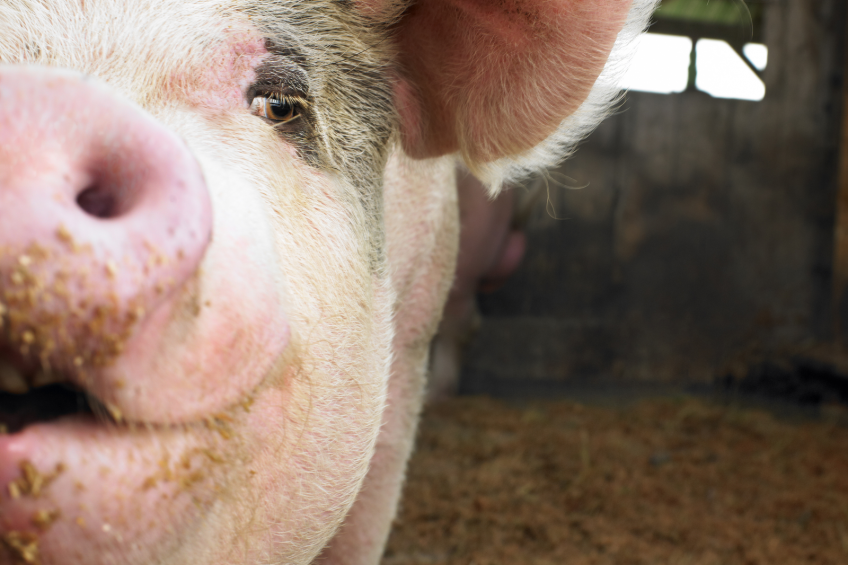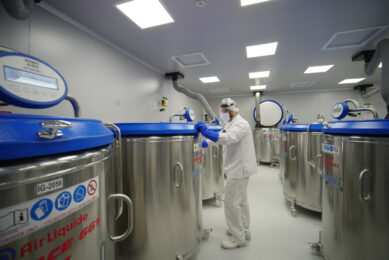Blog: New medicated feed regulation proposals

The European Commission has issued its new proposals on medicated feeds. What does it mean for the EU pig industry?
Each Member State seems to have different regulations and these proposals, which are being sent to the European Parliament and Council for approval, are trying to harmonise some of the regulatory aspects.
Some aspects I find disturbing as a pig veterinarian:
Preventive use – “Medicated feed containing antimicrobial veterinary medicinal products shall not be used to prevent diseases in food-producing animals or to enhance their performance.” This is a long-standing argument. The authorities seem to feel that preventive use is really just for growth promotion rather than preventing disease. It is true that low level inhibitory use of antibiotics have prevented enteric disease such as swine dysentery, necrotic enteritis and ileitis and thereby also enhanced performance. Growth promotion has been banned since 2006 in the EU, so if they are so concerned then why do they not properly define preventive use ‘as the low level use of antibiotics to prevent disease’. The EMA have tried to define prevention of the use of antibiotics in healthy animals but they do not differentiate between high level therapeutic use and low level use. Authorities have said ‘we do not want antibiotics propping up poor husbandry on farms‘ and this we can understand and accept but not all farms are at the same level to adopt these changes. They want to introduce the term metaphylaxis for the early treatment of animals and birds but when disease or clinical signs are already being displayed. If this is to apply to in-feed medication, it will be too late for the prevention of post-weaning diarrhoea and also treatment of Streptococcus suis meningitis. They do not realise that the examination of the pigs, the writing and dispatch of the prescription, the manufacture and delivery of the medicated feed may take several days and then early signs have turned into severe clinical signs, extensive disease and even death – or do they? Either way it is poor animal welfare, so do they want that on their consciences and giving more ammunition to the animal welfarists?
Metaphylaxis needs to be redefined as ‘the early treatment of infected animals before clinical signs have developed‘ or at least treatment during the period of incubation of a disease as the Danes do. Over 90% of farms will use either zinc oxide or antibiotics at weaning to prevent post-weaning diarrhoea and possibly 30% of farmers will use an antibiotic to stop Strep meningitis. Improvements of husbandry can help but it is pointless medicating the feed 5 days after weaning when the pigs are already scouring and possibly appetites are depressed and insufficient feed and medication will be consumed. If the piglet has meningitis and is writhing on the floor in agony, it is not going to eat, so any consistency of dosing etc is meaningless.
Some colleagues have raised concerns about the statement “In order to ensure the safe use of medicated feed, its supply and use should be subject to presentation of a valid veterinary prescription which has been issued after examination of the animals to be treated.” Do vets have to go out each time to check on the animals before they write a prescription? If the farm is under the care of the veterinarian and they are doing the health reports etc on a regular basis then there is no real need to go out for regular occurring events like post-weaning diarrhoea. If some other disease develops then he is likely to go anyway. This is over-restrictive if interpreted to the precise wording for both farmer and vet.
They spend a lot of time discussing homogeneity, which is a good thing and most of the feed companies in the UK I have seen are good at this and are regularly inspected. Home mixers are also regulated and classified but the addition of medicines ‘on feed’ in some countries by top dressing must be a cause for concern by comparison yet it is advocated.
They have differentiated between contaminations of feed by antibiotics but seem awfully concerned still about carryover of antibiotics into following feeds. This really is an overblown issue (Read: Pig feed: Potential effects of antimicrobial carryover). Most mills take steps already to stop any transfer by cleaning down between batches, so I think they should manage the 3% for medicines and 1% for antibiotics carryover levels between batches of feed. It already applies to anticoccidial drugs in poultry diets. Carryover limits can be higher if properly evaluated and gut pharmacokinetic/pharmacodynamic relationships may prove of help here to increase the percentage.
From a pharmaceutical perspective regarding antibiotics, stability in feed may be an issue and possibly the limits put on their tolerances are a little strict, especially for pelleted feed, which is notorious for the destruction of some antibiotics due to the steam, high temperature and pressure. Currently the tolerances are 10% for antibiotics included at greater than 500ppm, 20% between >10-500ppm, 30% between >0.5 and 10ppm and 0.5ppm 40%. For the majority of antimicrobials it is going to be ± 20%, whereas in the past in the UK we used 40%, as a rule of thumb, so it will be much tougher. Warnings for some antibiotics may be required on their SPCs.
Overall, the regulation does try to standardise and harmonise many aspects of medicated feed in production animals and also surprisingly for pet animals but there still needs to be some clarification of the meaning of preventive use in particular. I hope the authorities will be sensible and listen.











